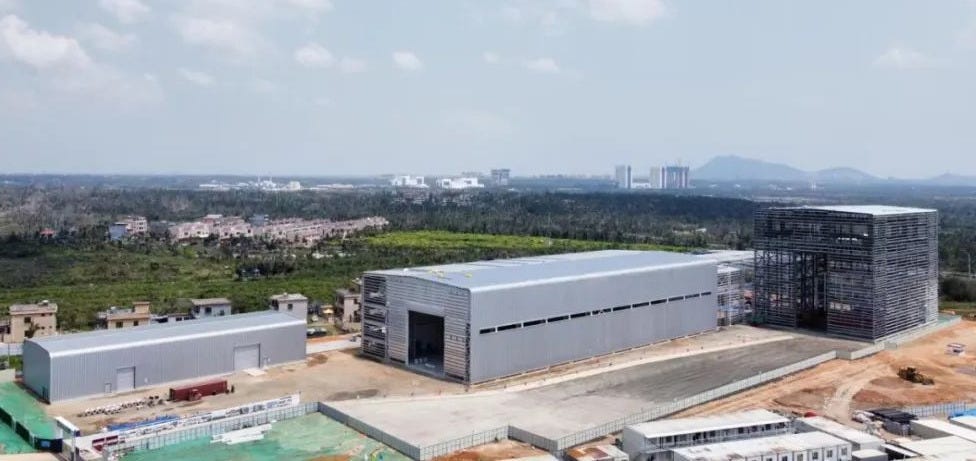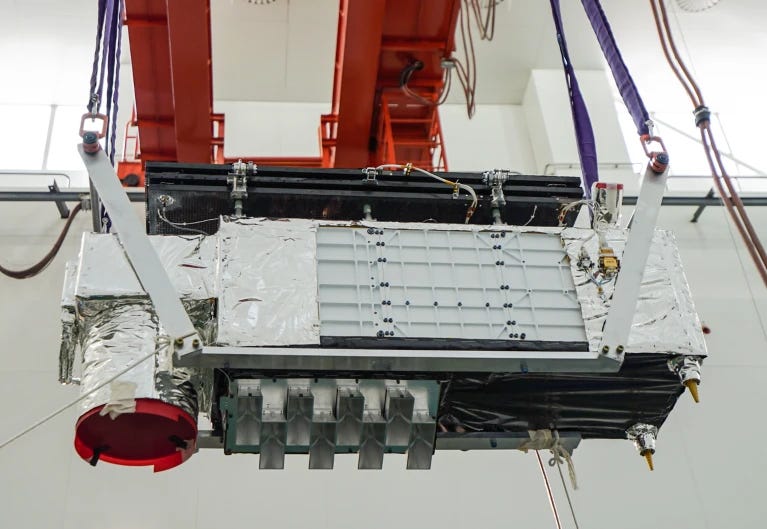Satellite Breakthroughs Galore, Reusable Rockets Fire Engines
For a busy two weeks, tests have been happening at a rapid pace.
Despite the lack of the China Aerospace Science and Technology Corporation’s 2025 ‘Blue Book’, which will outline this year’s goals, China’s space sector has been firing on all cylinders to develop reusable rockets and to make various satellite innovations. Progress is occurring on all fronts of the sector, thanks to nationwide support at all levels.
YF-102V tested for reusable Long March 12
On March 15th, the China Aerospace Science and Technology Commercial Launch Vehicle Group Co Ltd (中国航天科技集团商业火箭有限公司) and the Academy of Aerospace Liquid Propulsion Technology (航天推进技术研究院) announced that a series of tests had been completed with a reusable rockets second-stage, either the Long March 12A or 12B, along with an engine firing. The engine used during the test was later stated to be the YF-102 with a partial nozzle extension, making it the vacuum YF-102V variant.
According to the two companies, the tests back on March 15th verified the second-stage’s throttle control of the engine, control of multiple engine startup and shutdown processes, and proved the design of the stage. These tests had rocket-grade kerosene and liquid oxygen loaded into the test stages’ propellant tanks with the engine running at full power, around 85 tons of thrust.
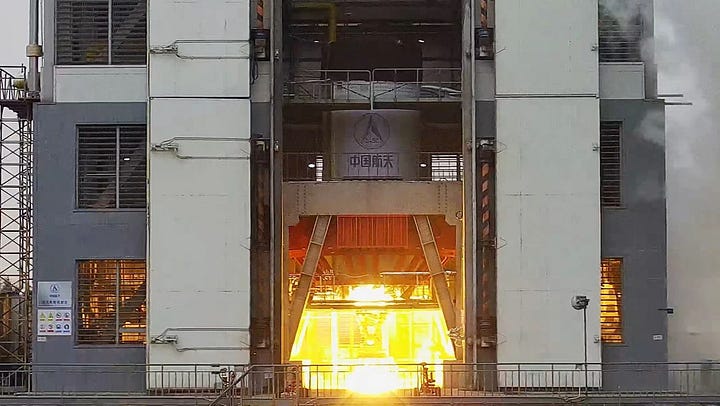
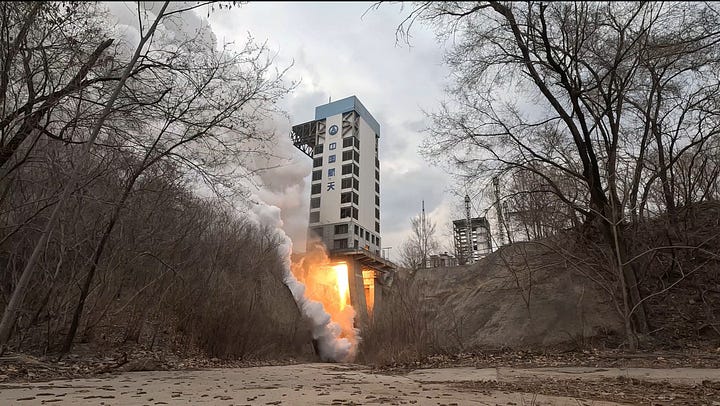
Additionally, it was noted by the Commercial Launch Vehicle Group that this was the company’s first large-scale test since its establishment six months ago in September 2024, along with its reusable rocket project. Further tests of the reusable rocket systems stages are expected with the company following the principles of: safe and reliable; easy to use and durable; and fast iteration.
A reusable Long March 12 variant is currently believed to be targeting a debut flight in the second half of the year.
Cosmoleap, AALPT test YF-209 for Leap-1
Cosmoleap (大航跃迁) and the Academy of Aerospace Liquid Propulsion Technology (AALPT) shared on March 17th that a joint test of the YF-209 engine had been completed between the two parties. This test saw the liquid methane and liquid oxygen burning YF-209 engine generate 80 tons of thrust, and confirmed what engine Cosmoleap plans to use on Leap-1 (跃迁一号).
As the engine provider, AALPT manufactured and developed the engine while Cosmoleap brought one of its Flint One (火石一号) flight computers to control the engine. During the joint test, Flint One controlled the engine startup and shutdown timing along with its throttle, while monitoring data to ensure reliability.
Regarding why the YF-209 was chosen to power Leap-1, Cosmoleap stated:
“The [YF-209] is a high-thrust reusable engine developed by the Academy of Aerospace Liquid Propulsion Technology, and will be used for the flight test of the Leap-1 reusable rocket. The engine has made breakthroughs in multiple start control technology, thermal protection technology for large heat flux reusable thrust chambers, key technologies for long-life reusable turbopumps, and engine reuse maintenance. It has AI online fault diagnosis and health management and rapid test and launch capabilities, and has the characteristics of low cost, high reliability, and easy maintenance. The test engine has successfully completed the development and reliability verification work, and has the conditions to carry out flight tests.”
If there are any problems with this translation please reach out and correct me.
The joint test was praised as a success by Cosmoleap, ahead of Leap-1’s first flight later this year followed by a booster recovery via a catch tower in the following flights.
AALPT to increase production of rocket engines
March 18th had the Academy of Aerospace Liquid Propulsion Technology announce, following March 15th’s and 17th’s tests, that it will increase the production rate of its commercially available rocket engines. The engines with an increased production rate will be the YF-102 and YF-209 along with their vacuum optimized variants.
This production increase will be done in various phases, with phase one seeing an increase to three hundred engines per year. That would see an engine completed every 1.2 days.
With the increase in production, AALPT expects their engines to support various low-cost high-frequency commercial launch vehicles thanks to extensive engine testing.
Long March 10 launch pad construction progresses
Since late January, progress on the Long March 10 Moon rocket’s launch site has continued steadily, with LC-301 now being a hive of activity.
So far, the launch support tower’s central core has continued to rise along with parts of the outer shell that will support various service platforms. Next to the tower, the flame trench appears to be fully excavated, opting to divert the effects of launch toward the sea, with some reinforced concrete already being set.
Thanks to flyover images shared by kelvin61942434 on Twitter, the Long March 10’s mobile launch platform was also spotted and is already taking shape, along with much of the tracks to move the vehicle from its assembly building.
With the orientation of the flame trench and the shape of the launch platform, the Long March 10 will likely be orientated the same as SpaceX’s Falcon Heavy, relative to its crew access tower. This, along with the flame trench diverting toward the sea, should allow for many clear views from land.
Last year, throughout 2024 work on the Long March 10’s pad was largely focused on clearing land for the flame trench as well as various propellant and consumable pipelines. Additionally, last November China State Shipbuilding Corporation (中国船舶集团有限公司) announced that its subsidiary, Wuchang Shipbuilding Heavy Industry Group (武昌船舶重工集团有限公司), had signed a contract to produce the launch towers for the rockets mobile launch platform.
A timeline to complete the launch pad has not been stated yet but the single-core Long March 10A is expected to fly in 2026, while the Long March 10 Moon rocket will follow in 2027.
iSpace Hainan factory set for July opening
iSpace announced on March 20th that construction of its Hainan facility, which kicked off in November 2024, had surpassed two hundred thousand safe working hours along with the installation of final major beams. To celebrate a small ceremony was held in the taller of the three buildings with various workers, team leaders, and company executives.
It was noted that the facility is on track to enter operation in July 2025, ahead of the first flight of Hyperbola-3 in December. iSpace’s Hainan facility is planned to consist of a booster and upper-stage factory, a machine processing factory, a production workshop, three first-stage production and refurbishment factories, and a support building. Once complete the facility will occupy an area of approximately ninety acres and support thirty-six missions per year.
Chinese team utilizes quantum communication for 12,900-kilometer message
Science journal Nature shared on March 19th that a Chinese team has sent a message 12,900 kilometers, between Beijing and Stellenbosch University near Cape Town, South Africa, via the Jinan-1 satellites utilizing quantum communication technology. To demonstrate secure communications, the satellites and two ground stations utilized quantum key distribution while sending laser pulses over the vast distance.
According to China Daily, the small size of the satellite, around 100 kilograms, and the use of two compact ground stations proved the potential for secure communications worldwide.
In the near future, the research team behind the breakthrough is seeking to prove a practical and useful technology. In support of this China Telecom is planning to launch four small quantum communications satellites in 2026.
Laser Starcom demonstrates 400-Gbps satellite test

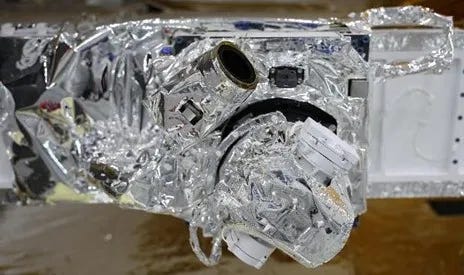
Announced on March 18th, Laser Starcom (北京极光星通科技有限公司) shared that its Guangchuan 01 (光传01) and Guangchuan 02 (光传02) satellites had demonstrated a four hundred gigabits per second data transmission test. The two satellites for the demonstration were launched back in November 2024 atop of the first Zhuque-2E.
For the test, the two satellites utilized their laser terminals to transfer data back and forth for six minutes and forty-four seconds at a separation distance of 640 kilometers with minimal error. In theory, this allows for up to 14.4 terabytes of data throughput, with the ability to vary speeds from ten gigabits per second up to four hundred, depending on the receiver.
Additionally, this test massively surpasses a previous record-breaking in-orbit transfer speed set by Changguang Satellite Technology Co Ltd (长光卫星技术股份有限公司) in December, with a speed of one hundred gigabits per second. That test was already hailed as surpassing transfer speeds available for Starlink.
With the successful data transmission test, Laser Starcom expects its laser terminals to support China’s various mega-constellation efforts alongside selling to customers who need high-speed satellite communications.
CMSA opens bidding for lunar remote-sensing satellites
The China Manned Space Agency has recently opened bidding for lunar remote-sensing satellites, the number of satellites was not stated.
According to the request from the space agency, the satellites will support China’s first and follow-up crewed lunar missions. Each satellite will operate in lunar orbit gathering high-precision topographical and mineral surveying data across the Moon’s low latitudes.
No timeline for launching and deploying the satellites was shared but a first crewed landing mission is still officially targeting 2029, as such the satellites could be deployed in 2028.
Astronstone completes AS-1 test article
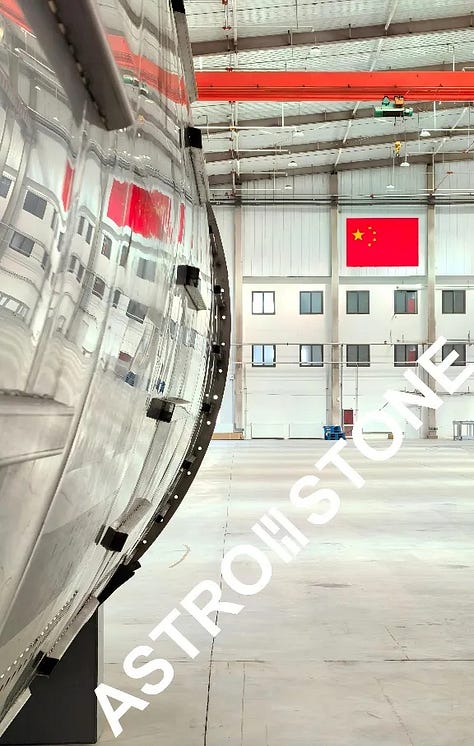
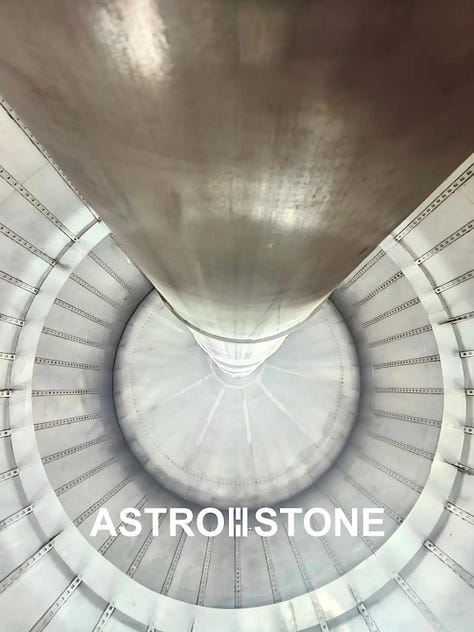

Astronstone (宇石空间), who completed their angel funding round two weeks ago, shared on March 21st that they have recently completed one of their first test articles for the AS-1 launch vehicle.
This test article is said to be a ten-meter-long section of the second-stage, 4.2 meters in diameter, and made of stainless steel that is between one to two millimeters thick. With the test article, Astronstone claims they have proven their manufacturing capabilities to develop a low-cost, mass-producible, high-frequency launch vehicle.
Via the choice of a common bulkhead as well as thin and lightweight stainless steel, Astronstone claims they have shaved 1,000 kilograms off of the vehicle’s dry mass, compared to conventional rocket manufacturing.
AS-1 is expected to be a two-stage partially reusable launch vehicle burning liquid methane and liquid oxygen, with nine engines on the first-stage generating 700 tons of thrust. The vehicle is currently planned to be 4.2 meters in diameter and 70 meters tall and weigh 570,000 kilograms fully fuelled. For payload, the company is aiming to have AS-1 deliver 15,700 kilograms into orbit when expended or 10,000 kilograms when reused. A debut flight is currently set for 2026.







